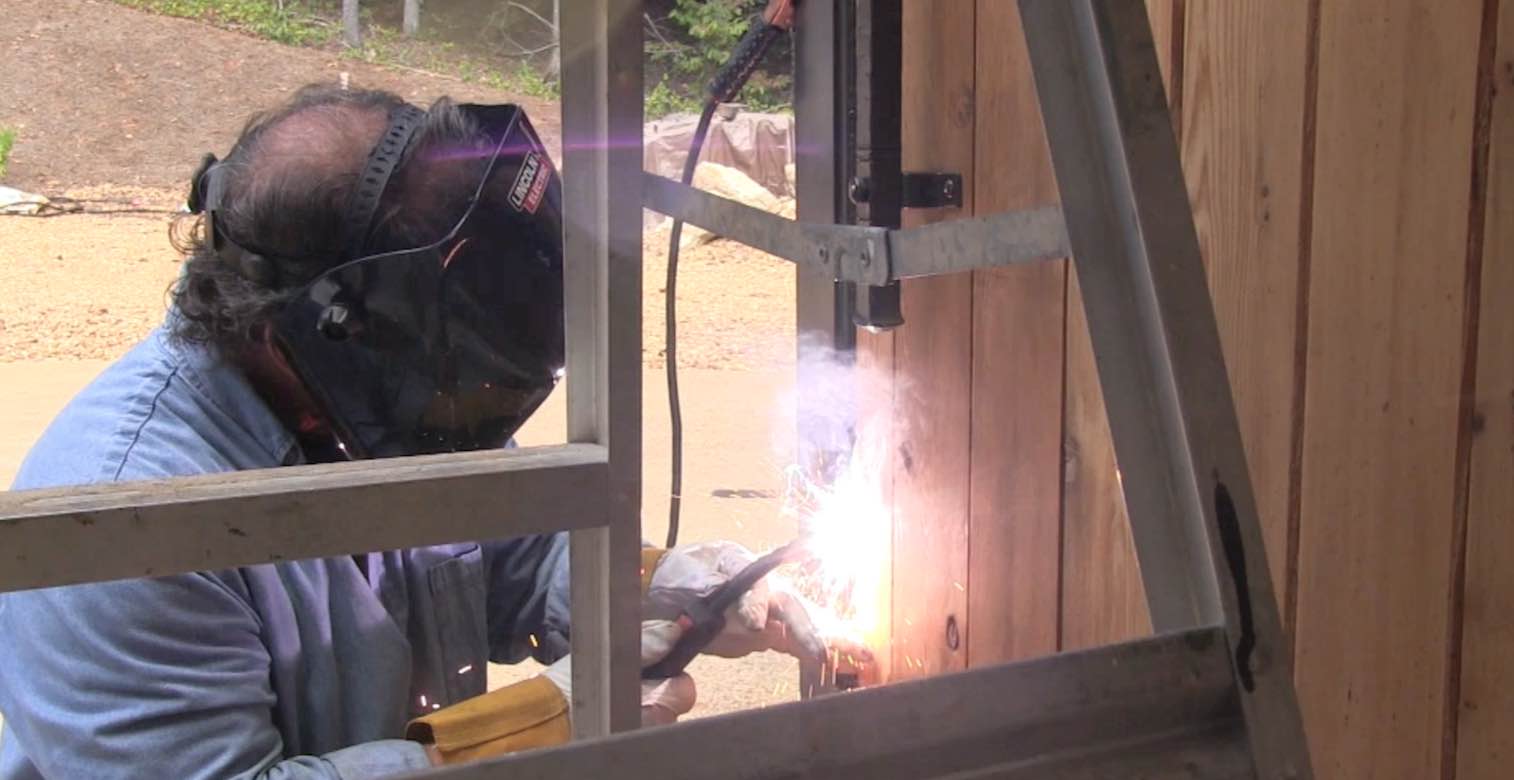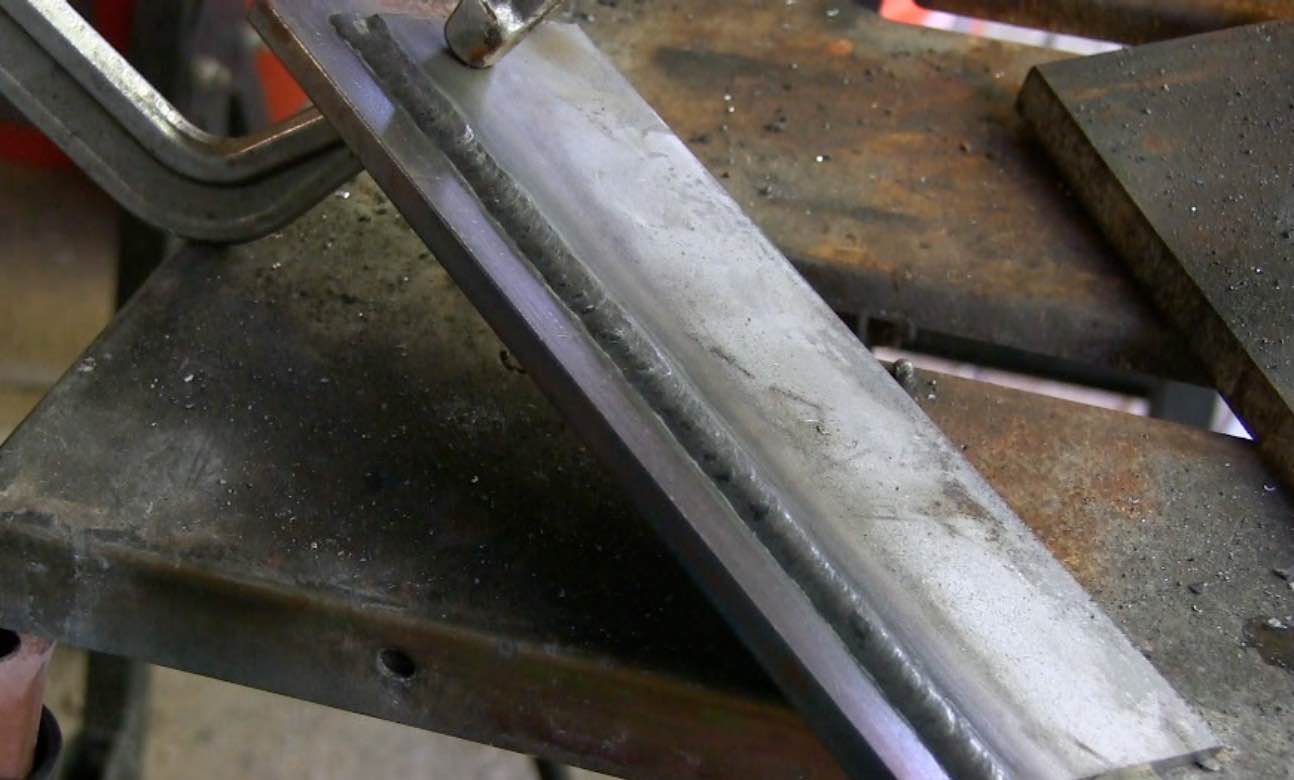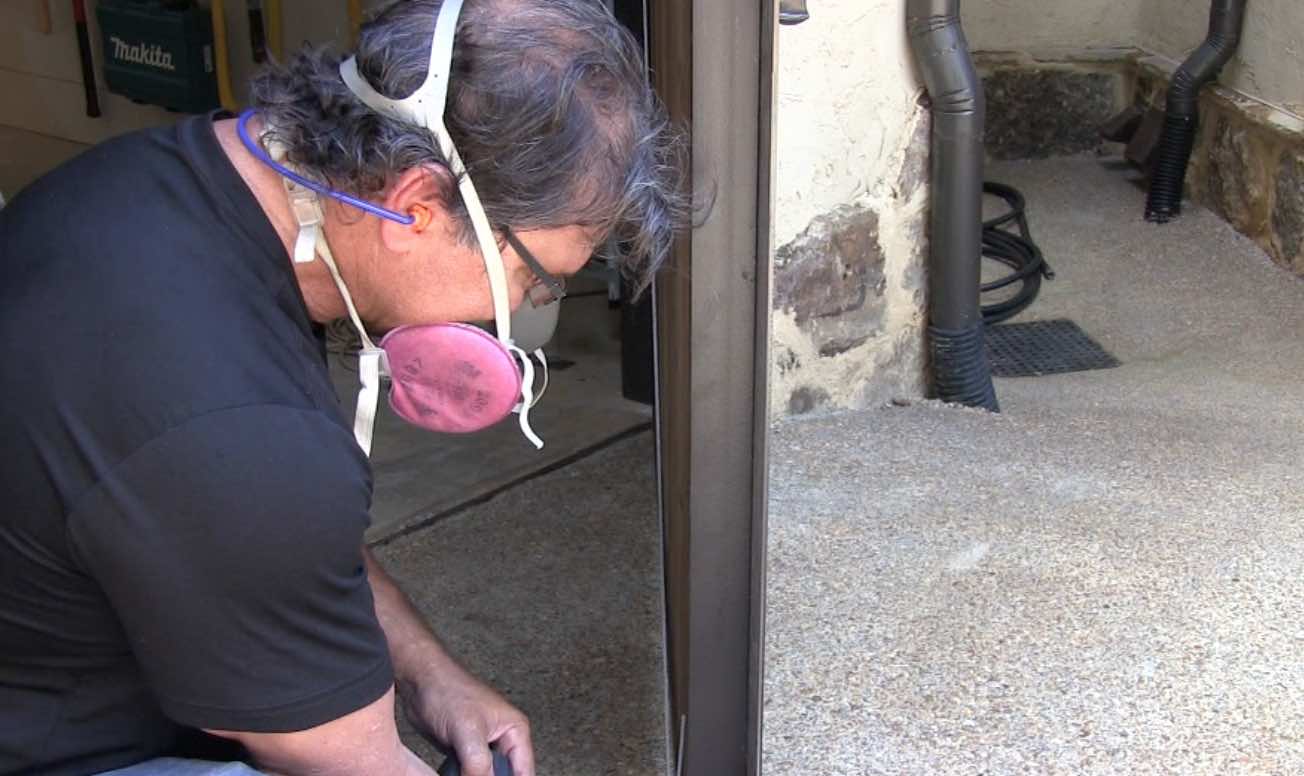115v Flux Core Welding on a Garage Door
115 volt flux core wire is great for portable jobs and for welding on galvanized steel.
I took my hobart 210mvp to a friends house to weld some strips on his custom made garage doors.
Its nice to have portable welding equipment...whether to do a favor for a friend, or to make a quick buck.
Stick welding is a bit more versatile in what thickness you can weld as well as material type but 115 volt gasless flux core is also an option and NR211 wire works great for welding over galvanized coatings.
Important tips to remember for 115v flux core welding

polarity
I can’t stress this enough. The wrong polarity will make you think something is wrong with your welder or that your wire is no good.
Most , or nearly all self shielded flux core wires requires DCEN polarity.
Since bare wire requires DCEP, there is a good chance that your 115 volt mig welder is not on the correct polarity for using gasless flux cored wire.
The way to check it is different from welder to welder.
Some newer inverter mig welders that also weld with flux core have a pigtail plug on the front of the machine that makes it quick and easy to change polarity.
on my hobart 210 mp, there are + and - signs on the terminals inside the machine.
also hobart was smart enough to include a diagram inside the machine along with a caution that gasless flux core wire requires dcen.
Just make sure that the negative (-) wire attaches to you power block…the thing that where the mig gun connects…and where the drive rollers are located.
newer machines like the lincoln powermig 210mp make it easier to change polarity with a pigtail on the front of the machine.

make sure you have a good ground connection
Having a good ground is important for mig or flux core welding.
Because with mig welding and flux core welding, wire feeds continuously to provide the arc as well as filler metal.
if you lose your ground momentarily, you will get a stutter much the same as if your wire speed is too high.
the way to ensure a good ground is go grind a spot down to clean bright metal and attach your ground clamp to the clean metal.
some machines come with a really cheap ground clamp with weak spring.
it might be worth investing in a better ground clamp if you notice a momentary stutter during the weld.
Use the right size knurled drive rollers
using
knurled rollers works way better than using the same smooth rollers
that you use for bare wire….using the right size is important too,
also the tension on the drive rollers should be setter weaker than what is normally used on hard bare wire.
flux core wire is hollow….hollow with granular flux inside.
using too much drive roller tension can crush the wire and make if feed and weld poorly.
breaker and drop cord
a
20 amp breaker is usually required. i have one or 2 115 volt mig
welders that will pop a 15 amp breaker just by turning them on.
if you need to use a drop cord, use a heavy duty one that is as short as possible.
I was using a 25 foot heavy duty cord on a 20 amp breaker for this garage door fix and I still popped the breaker a few times.
The hobart 210mp is not an inverter so requires a bit more power than some portable mig welders.
flux core nozzle
a nozzle specifically made for flux core helps you see the wire and puddle easier than leaving the gas nozzle on.
you can weld with flux cored wire with no nozzle at all but you risk damaging threads or clogging the gas ports
I have used teflon tape in a pinch when I didn’t have a flux core nozzle available.
I
just wrapped up all the threads and gas ports with a heavy layer of
teflon tape and then removed it when I was done with the job.
use the right stickout
stickout is often referred to as ctwd
CTWD stands for contact tip to work distance.
if you are using a reputable brand wire, they will have literature with the recommended stickout
If you are in doubt, shoot for around 1/2" to 5/8" with .035" wire
Flux cored Welding Wire
some flux cored wires work better than others…even when you have the correct polarity, drive rollers, etc.
Lincoln
nr211 is easy to find in stores, is available in small 2 lb spools as
well as larger spools and seems to run better than most.
But once you step up to the 10 lb spool size I like Hobart fabshield 21b best due to its ductility on multi pass welds.
wear a welding rated respirator...
I like the 3m 6291 with 2097 filters...it fits under all my welding helmets













